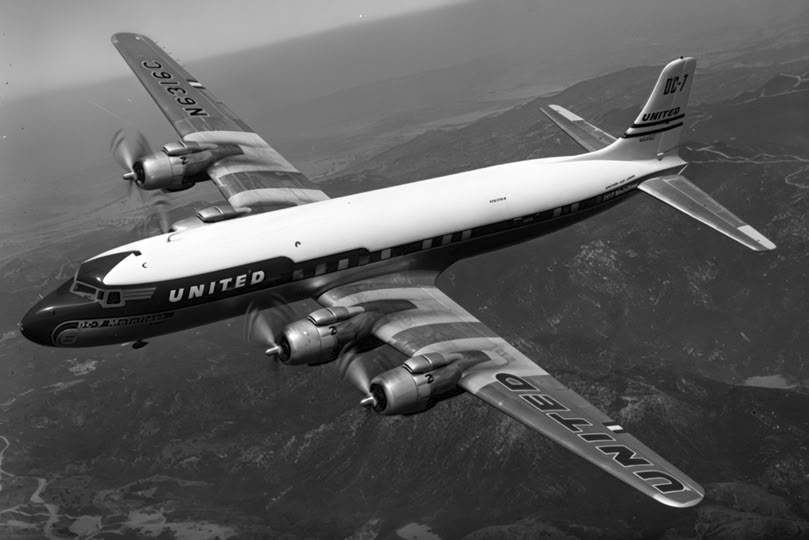
The Douglas DC-7 was a marvel of mid-20th century aviation, representing the final generation of piston-engine airliners before the advent of jet propulsion revolutionized the skies. A product of the Douglas Aircraft Company, the DC-7 was an evolution of the highly successful DC-6 and was designed to offer greater speed, range, and efficiency in the competitive world of commercial aviation. It was an elegant, powerful aircraft that epitomized the glamour and sophistication of the golden age of flight an era when air travel was as much about luxury and prestige as it was about efficiency.
A Leap Forward in Speed and Range
When the DC-7 entered service in 1953, it quickly gained attention for its remarkable performance. It was one of the few airliners capable of flying non-stop coast-to-coast across the United States in both eastbound and westbound directions without needing to refuel. This was a groundbreaking achievement at the time, and it positioned the DC-7 as a highly sought-after aircraft for airlines looking to offer faster and more convenient travel options to their passengers.
The DC-7 was powered by four powerful radial engines and featured a streamlined, sleek design that was not only aesthetically pleasing but also functionally superior to many of its contemporaries. Its ability to fly longer distances without refueling was a major advantage in the fiercely competitive airline industry of the 1950s, where airlines were in a constant race to offer the fastest, most luxurious, and most comfortable flight options.
United Air Lines: A Key Operator of the DC-7
Among the major U.S. airlines to operate the Douglas DC-7 was United Air Lines, which utilized the aircraft to expand its transcontinental routes. At a time when air travel was becoming more accessible to business travelers and vacationers alike, United saw the DC-7 as a perfect fit for its premium service offerings.
United typically used the DC-7 on its prestigious transcontinental routes, such as those connecting New York and Los Angeles, which were among the busiest and most profitable in the airline industry. The DC-7’s speed, combined with the growing demand for air travel, made it a top choice for business passengers who sought to travel quickly and comfortably across the country. The aircraft’s luxurious interior and quiet cabin made it a popular option among those looking for a more refined and enjoyable flying experience during the postwar boom years.
The comfort and service aboard the DC-7 were a direct reflection of the era’s emphasis on luxury air travel. United’s fleet of DC-7s was equipped with spacious cabins, plush seating, and attentive in-flight service. It was a time when passengers could expect to be treated to a level of hospitality and comfort that is now largely associated with first-class air travel.
Legacy of the DC-7
The United Douglas DC-7 became a symbol of an era when air travel was still a special event—a time when passengers would dress up for a flight and expect a level of service and attention that reflected the prestige of air travel. The aircraft’s advanced design and superior performance ensured that it remained a competitive player in the airline industry for many years, even as newer, faster jets began to enter service in the 1960s.
However, with the rise of jet aircraft, the era of piston-engine airliners like the DC-7 began to come to a close. The DC-7 was retired from commercial service as airlines transitioned to more fuel-efficient and faster jetliners. Nevertheless, the legacy of the DC-7 endures, as it remains one of the most iconic aircraft of its time a symbol of an age when flying was a luxurious adventure.
Today, the Douglas DC-7 is remembered not only for its technical achievements but also for its cultural significance. It represents an important chapter in the history of commercial aviation, a time when the skies were ruled by the power of piston engines and the glamour of air travel was at its peak.
Leave a Reply